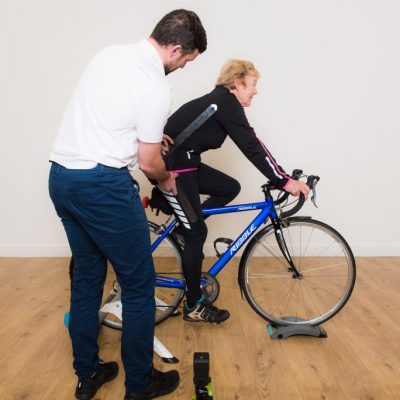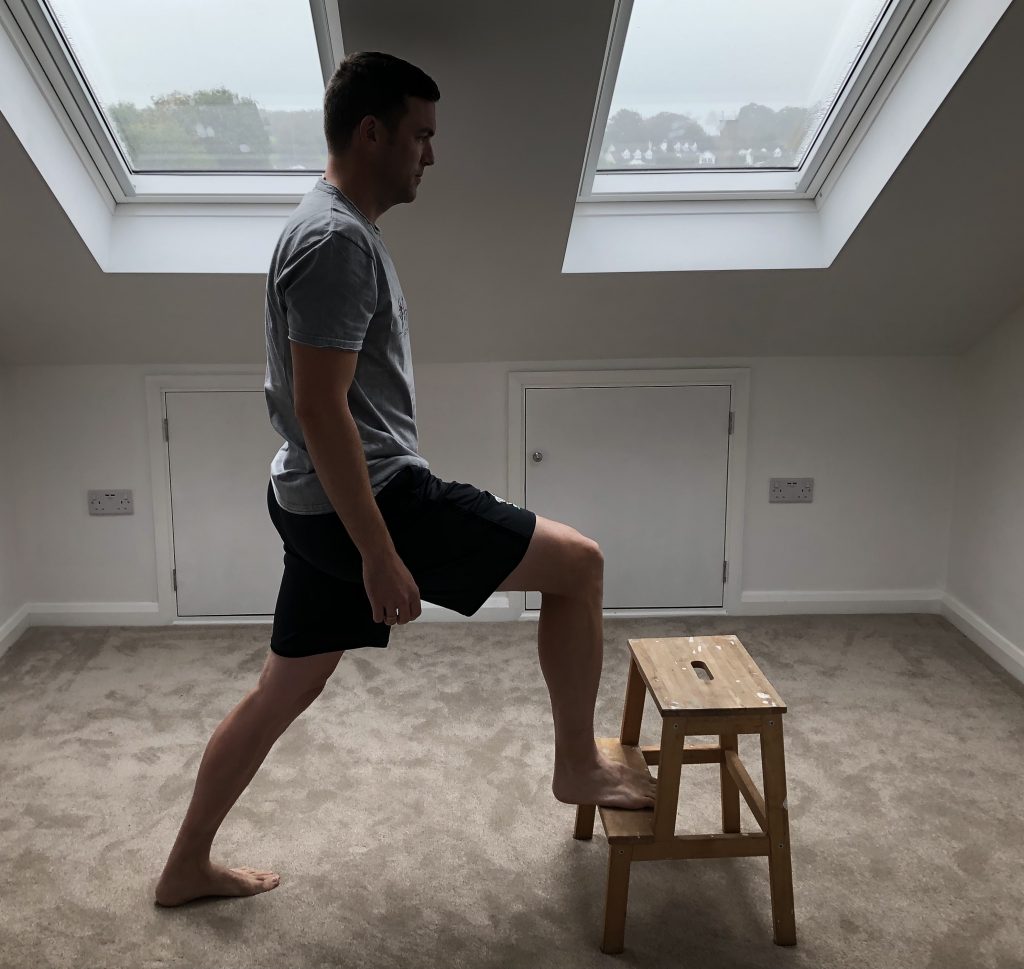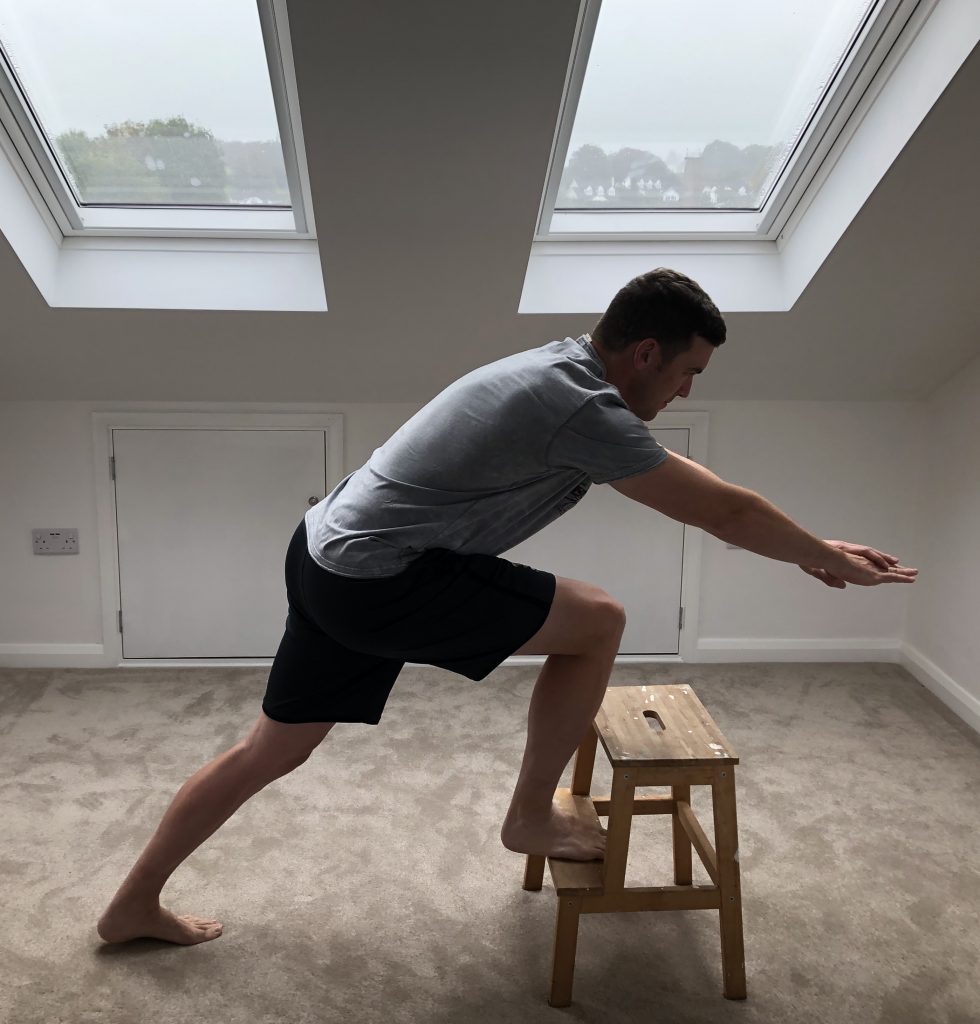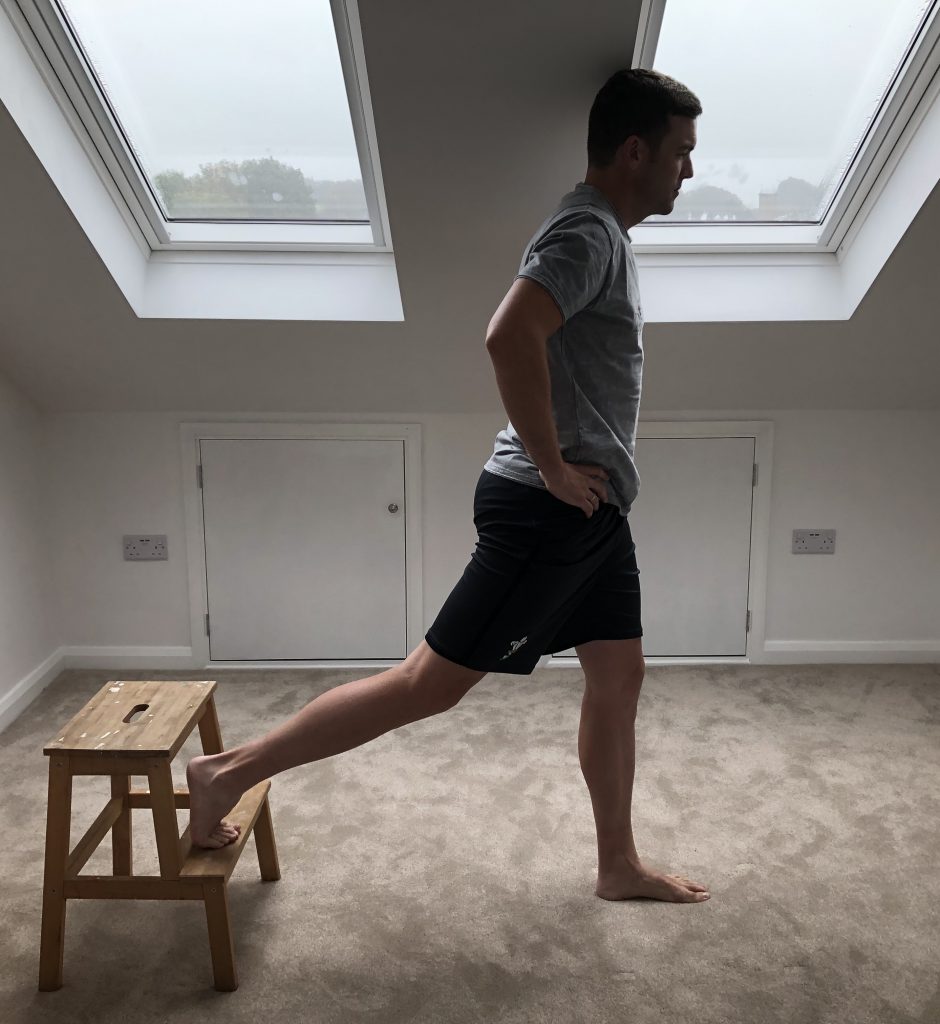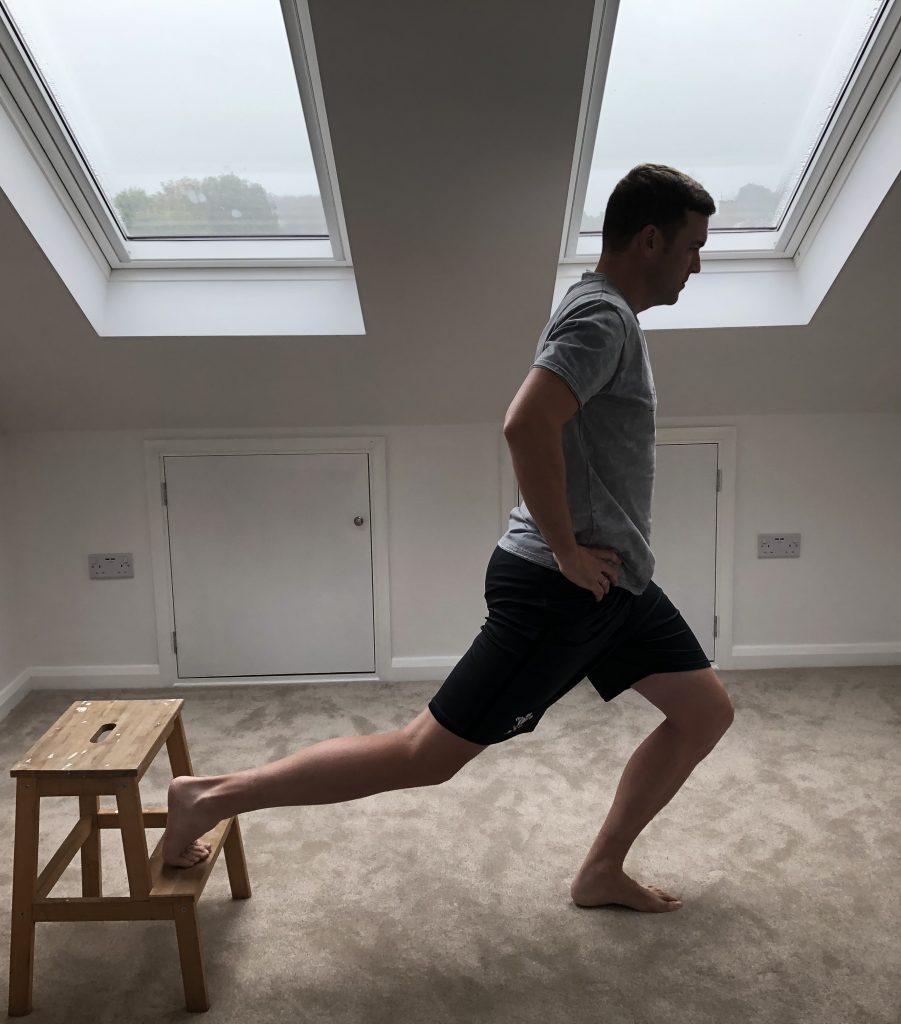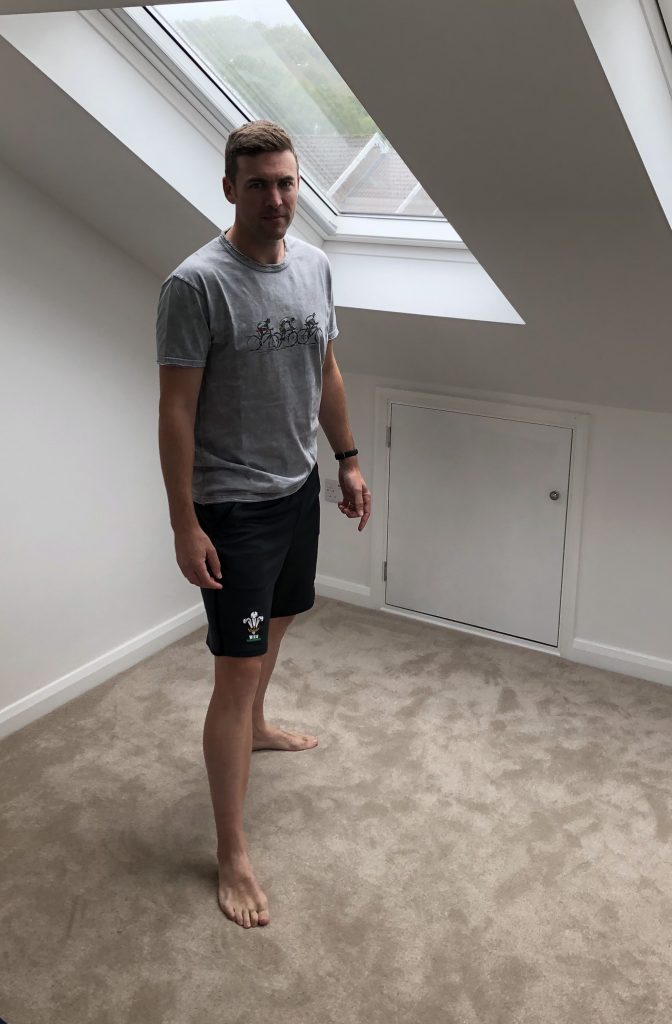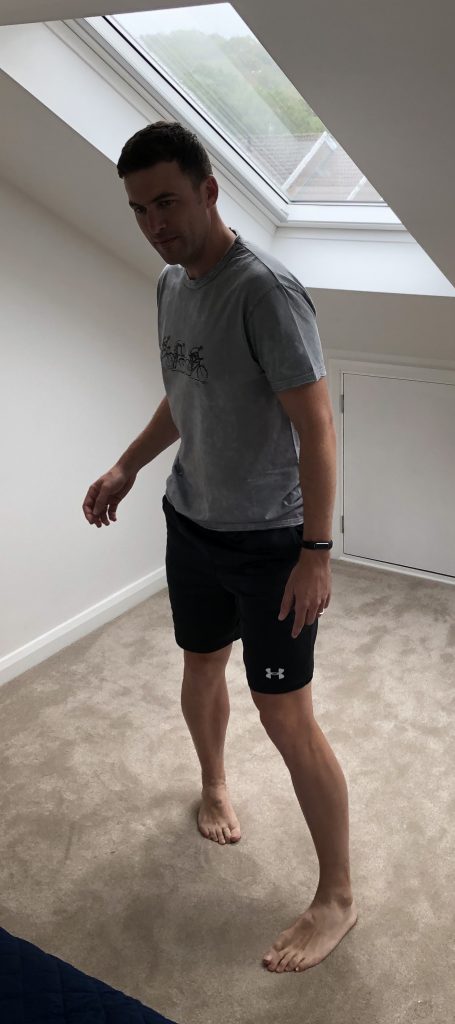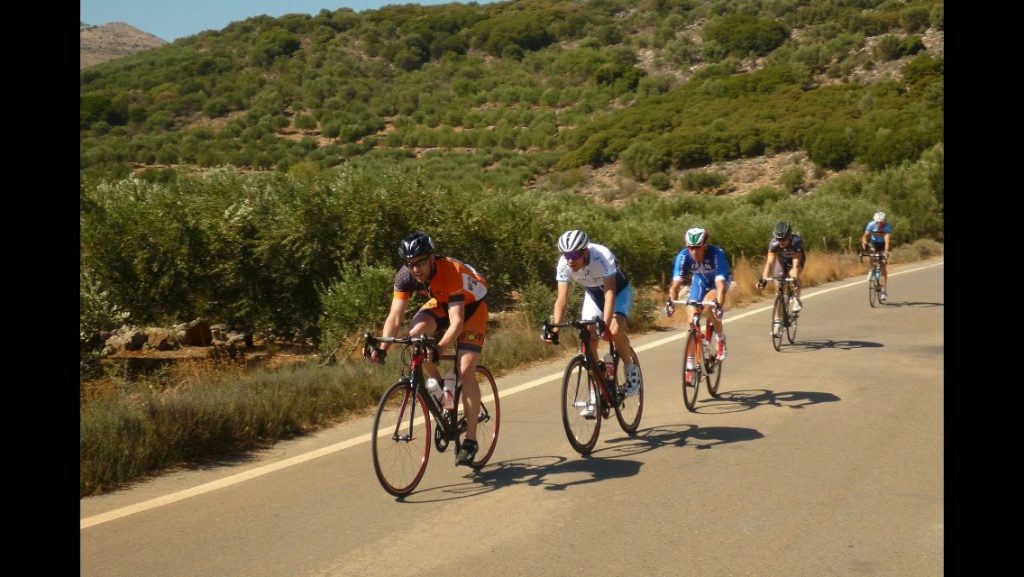Bullies of the Body (Click to Find out More)
and as such can be found to be the root cause of a fair few issues. So today we will be looking at my top 3 Hip Mobility Exercises. The 3 hip movements I see most commonly requiring some mobility work are:
- Hip Flexion
- Hip Extension
- Hip Internal Rotation
Hip Flexion – Forward reach on a step
Hip flexion is really commonly limited. Whether there is a structural, a sensitivity or a combination issue my main goal here is to get the patient comfortable taking the hip through range and as close to end range as they can manage.Starting Position
I like to use a step for this one. Even though someone may have limited hip flexion, there is still a fair amount of it. Getting someone with their right foot on the step will take up a fair bit of the range and allow you to work closer to the end range. The height of the step can vary depending on the level of restriction, but as it’s planned to be a home exercise too, yo really have the choice of 1 or 2 stairs for the height.Movement
To start with just rocking back and fore, taking the hip into more flexion gets you going. As the patient can self determine the range they use they can usually keep it pain free. Once they’ve done a few sets of that you can start changing things to create more comfort/range in the hip.Progressions
A simple way to progress is to add a forward reach. This increases the hips flexion quite a bit and again, start small range and increase as the patient feels comfortable. Then you can start changing the forward reach to add in a bit of lateral movement. If the anterior reach is reaching towards 12 O’clock you can ask them to start reaching to 11, or 10 O’clock to change the feel. Often they will have a bit more freedom this way (remember it’s a right hip we are treating). Or if you ask to go 1, 2 O’clock they may feel a bit more blocked up. This is neither good or bad, but it gives them a chance to explore their hip range in a safe way and may add to your assessment and guide future treatment/exercise.Hip Extension – 3D hip flexor stretch
This is easily the most powerful of the 3 we are talking about today…so. I. suggest. taking it easy to start with.Starting Position
Again I use a step for this one, but this time the patient has their back to the step and their right foot on the step. If. they are really limited or have difficulty with the balance of this, then start without the step.Movement
Once they are in position I like to start with the simple rocking again. Rocking forward and back with the left knee will create a nice hip extension mobility exercise. I like to go. 3-D with this one, so once they have complete the forward and back reps, try rocking the pelvis side to side. To finish off rotate the pelvis left and right. This is all done the right foot on the step.Right Hip Extension
Progressions
Simply increasing the speed/range is enough of a progression with this. It’s pretty powerful so you don’t actually need much. I do like to use hand drivers sometimes as it creates a more whole-body exercise of it. So for the 3 different directions, the hands drivers would look like this:- Both hands reaching backwards over head as you rock forward
- Both hands reaching left lateral and right lateral overhead
- Both hands reaching into left and right rotation at shoulder height
Hip Internal Rotation – Rotation Pivot
Though it’s the last one on this post, it’s probably one of the most commonly restricted movements. You tend to have to really work into this one to get any results…can be very stubborn!!Starting Position
Start with right foot forward in stride stance. This starts you in external rotation, which I really like, because it gives you more range to move into. Some people are really restricted in IR, so unlike the other 2 exercises where you deliberately take up range, here you want to create space to move into.Movement
If you are working on your right hip you will keep your right foot still and pivot around it. You do this by swinging the left foot around the right. I like to tell the patients to imagine their right foot is at the centre of a clock face and to swing their left leg around the numbers. This exaggerates the rotation and creates a really nice internal rotation stress on the hip. The range will depend on the patient, but commonly they will be looking at taking the left foot from 6 O’clock to 2 O’clock. What you really want to see is the pelvis rotating around the right leg creating the hip internal rotation.Pivot for Right hip Internal Rotation
Progressions
Range and speed are probably the easiest and most common ways of progressing. I would say that most patients will naturally progress as they feel more comfortable.If I want to create a greater internal rotation stress I add in the arms. A bi-lateral right rotation arm driver at shoulder height works great. So as they swing their left leg around to the right they drive the arms further around to the right.
Hip Mobility Summary
Probably the longest blog I’ve written in a while!! Could definitely use some videos…so I will try and get them all done at some point this week.
The main idea with these is to help hip mobility by creating a movement that is not stressful and is under the control of the patient. I find if they can be successful with a simple movement you can build on that really quickly and progress can start being made.
It’s important to note that all of these are movements, not stretches. You move through the range to end and straight back out. I feel this gives a far greater result than any stretch can give.
Related Posts
You may also like:
